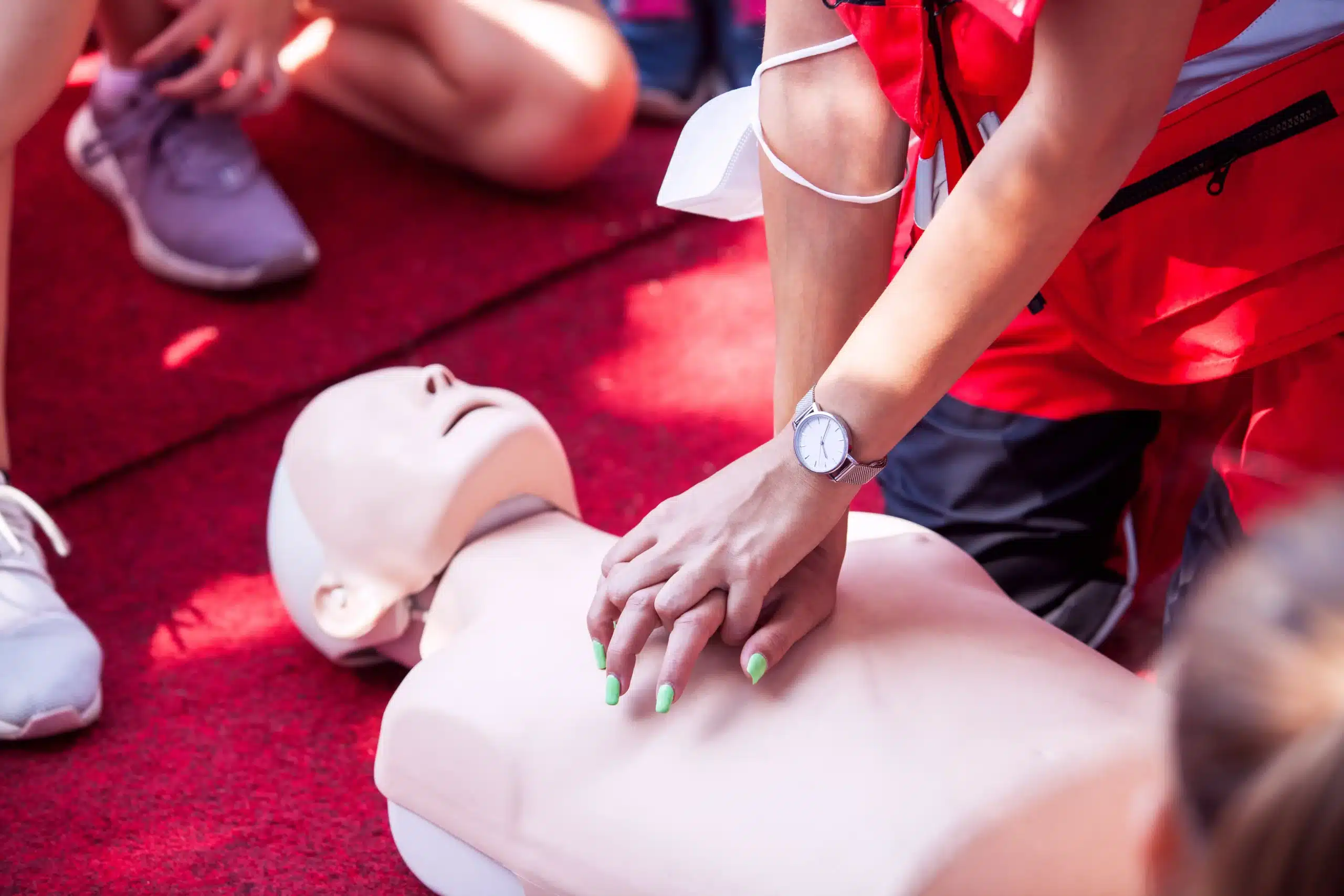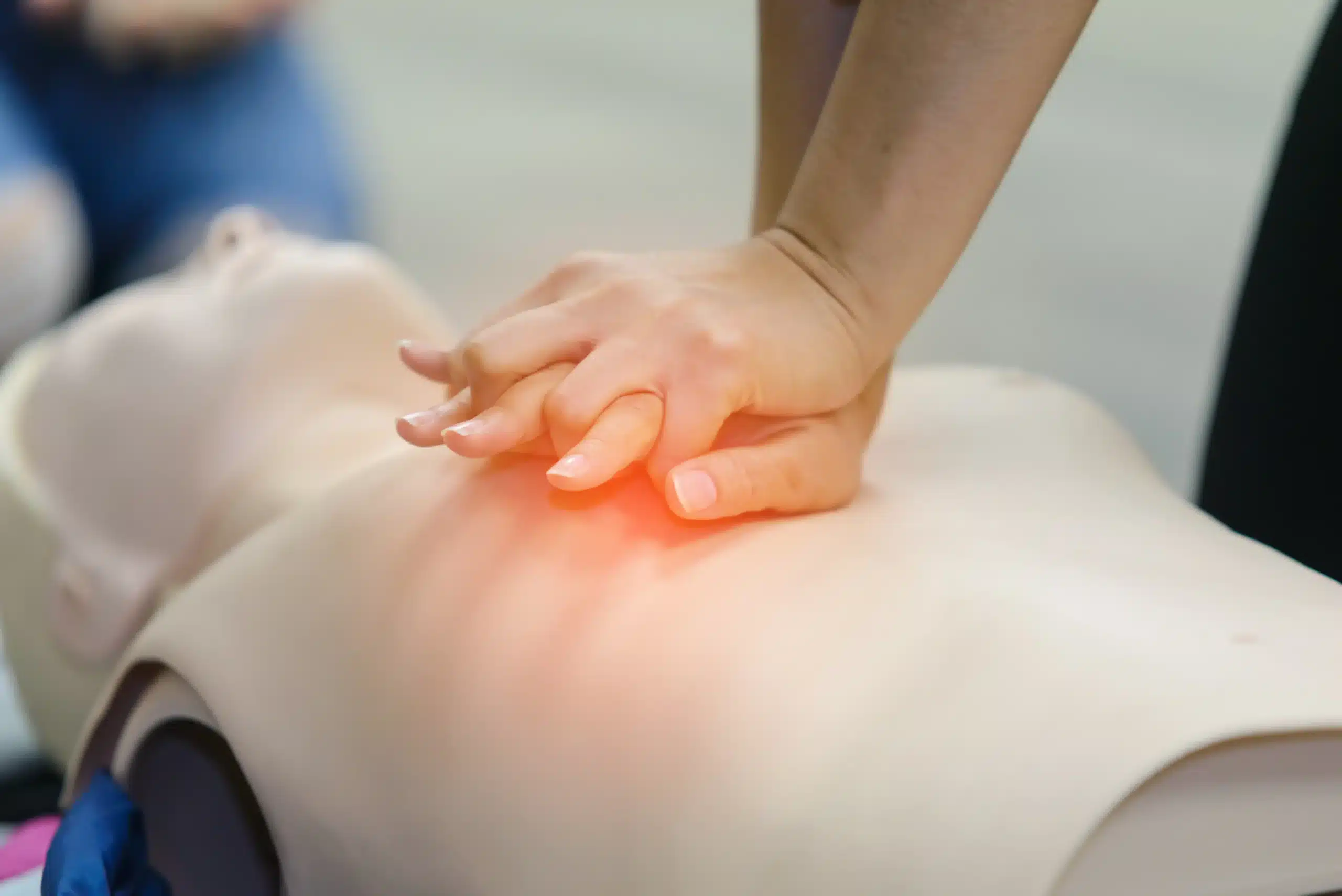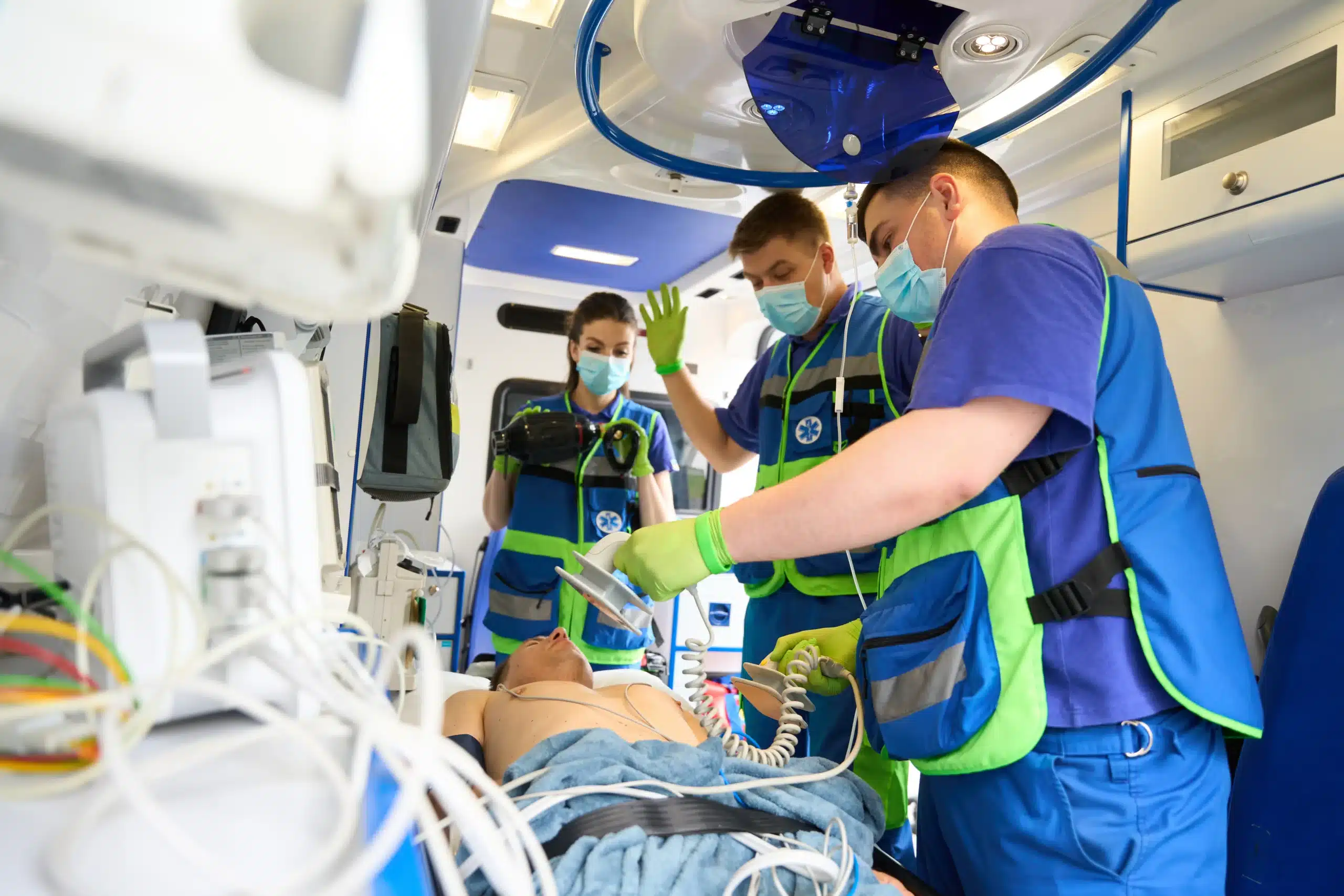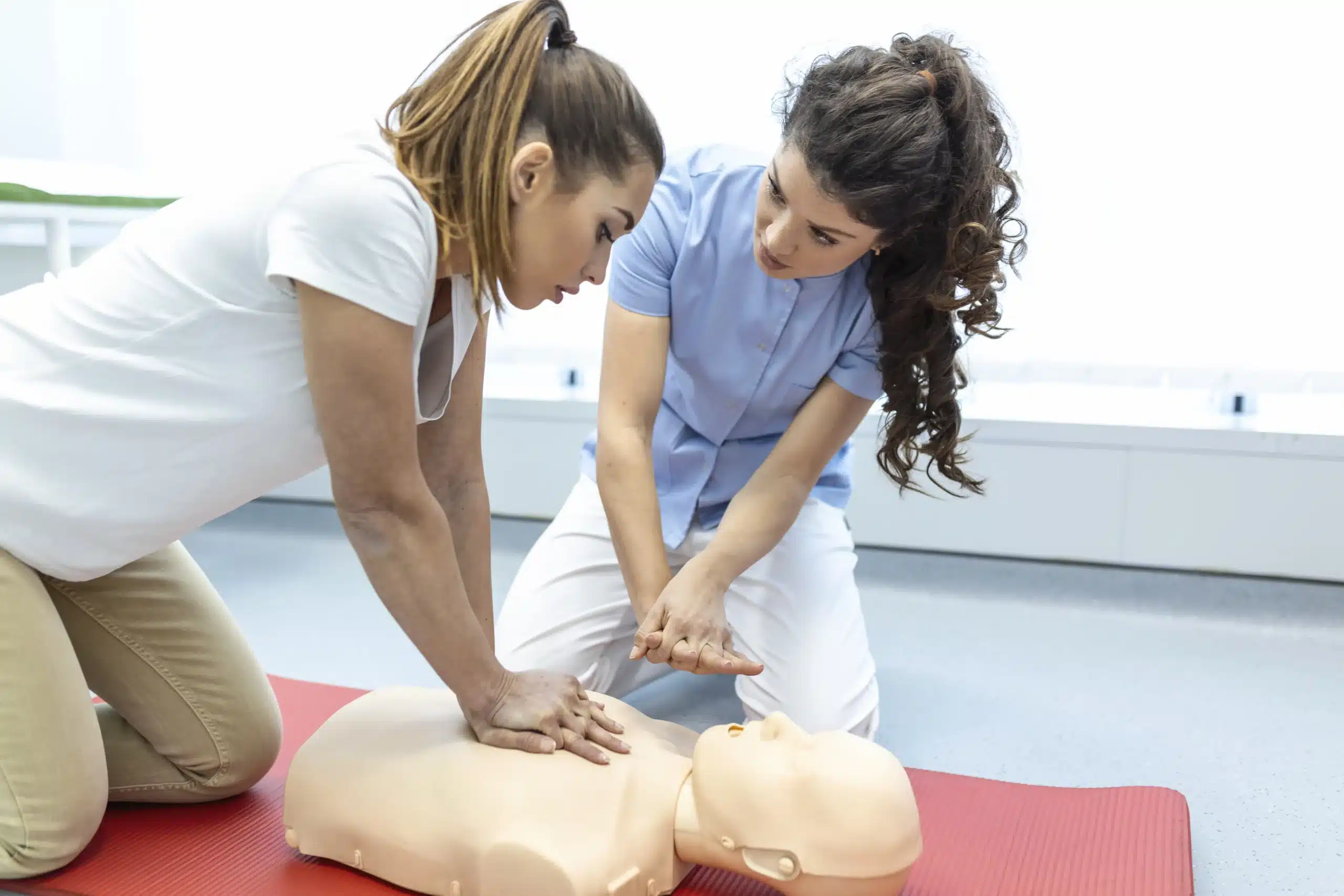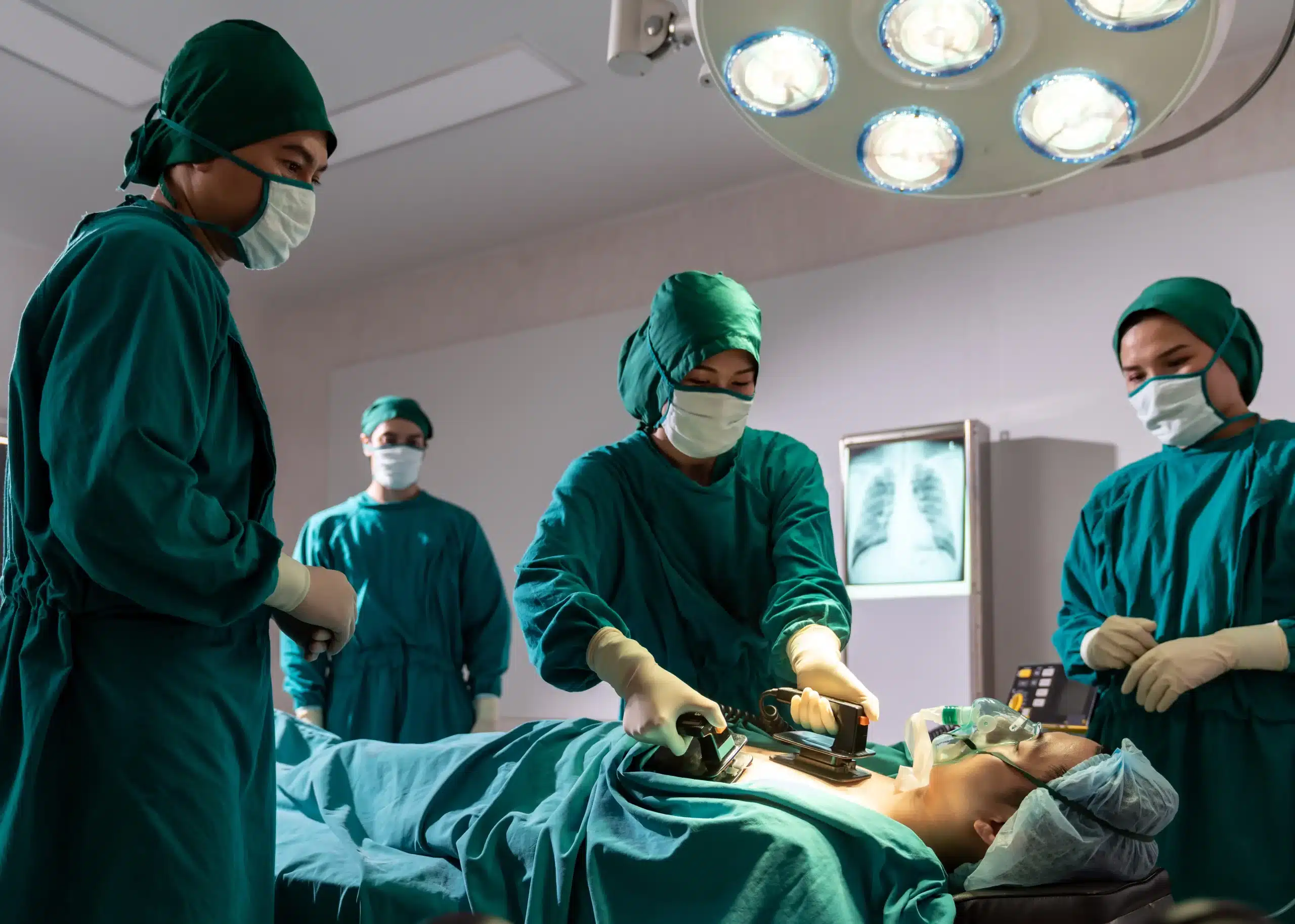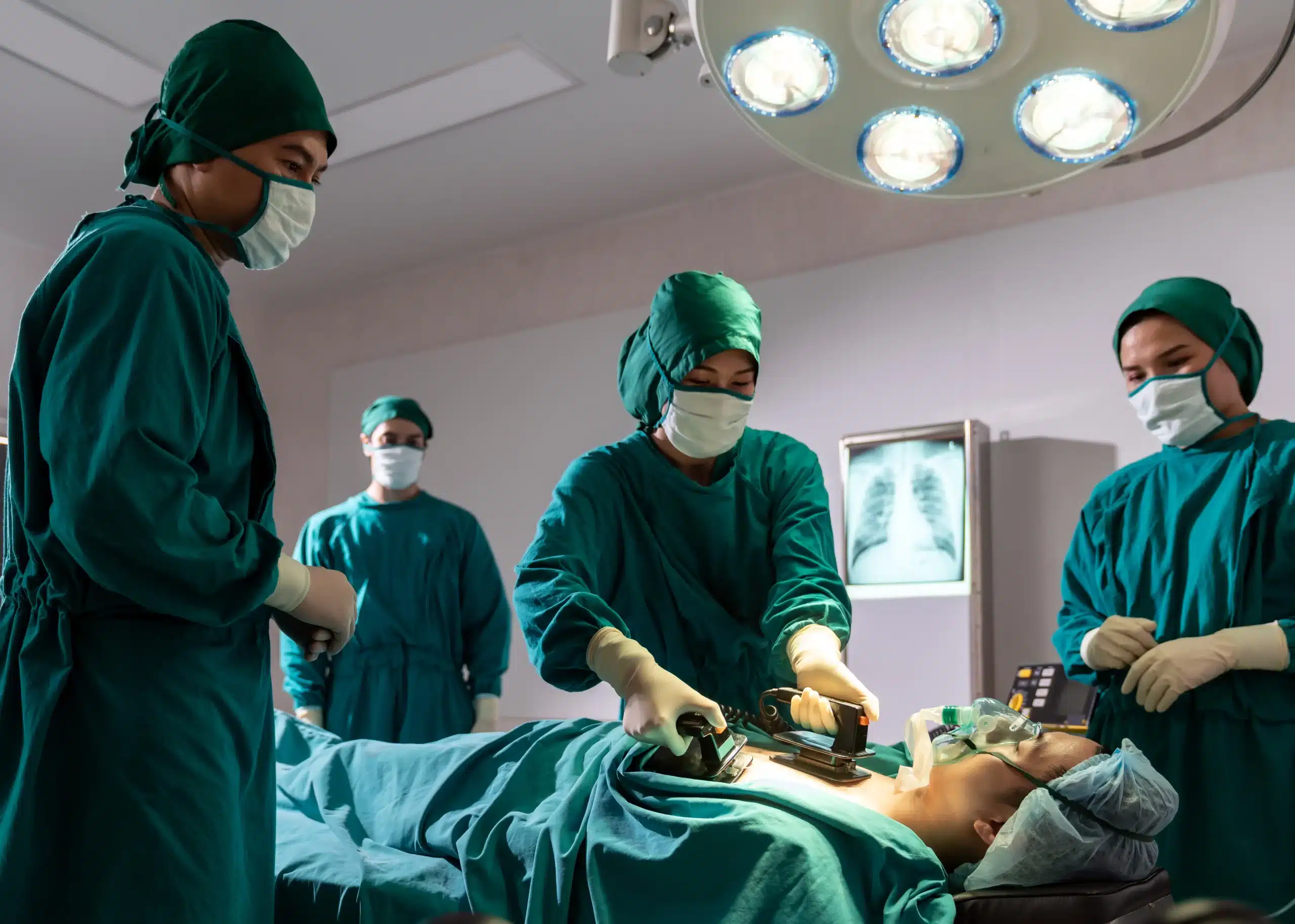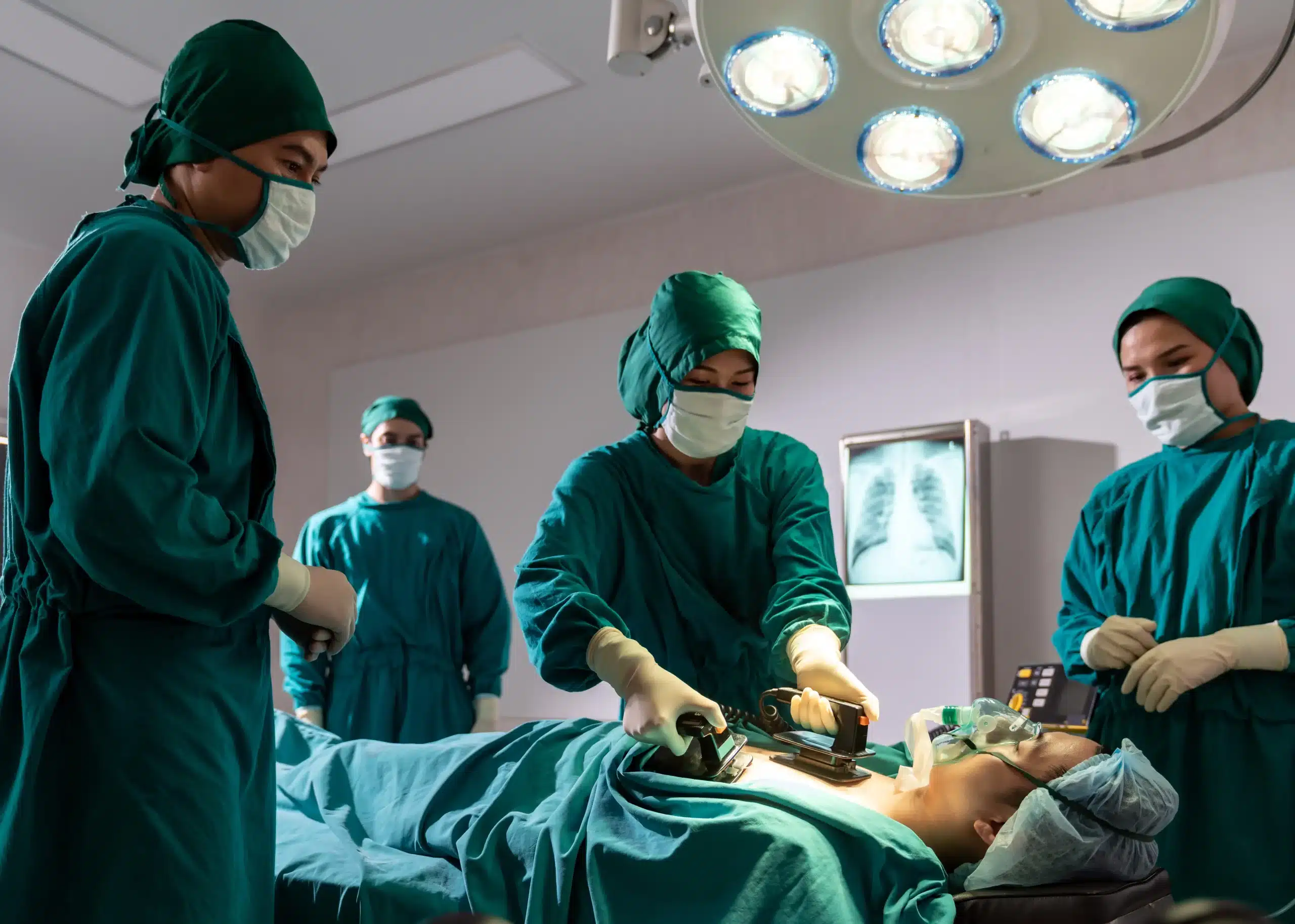Have you ever been in a situation where you wished you knew first aid? Maybe a friend tripped while hiking, or your child took a tumble at home. Knowing what to do in those moments can make all the difference. If you’ve typed “first-aid classes near me” into a search bar, you’re taking the first step toward gaining valuable skills that can help you protect yourself and those around you. This guide will walk you through the different types of first-aid training available, how to find classes in your area, and what to expect during your training. We’ll also cover specialized courses and debunk some common first-aid myths.
Key Takeaways
- First aid is for everyone: Learning first aid equips you with practical skills to handle everyday injuries and medical emergencies, making you a valuable resource at home, at work, or out and about. Find a course that fits your needs and learning style.
- Choose quality training: Look for accredited training organizations and experienced instructors who emphasize hands-on practice. Consider specialized courses tailored to your lifestyle or profession.
- Maintain your certification: Keep your skills fresh by reviewing the material and recertifying when necessary. Staying current ensures you can respond effectively and confidently in any situation.
What are First-Aid Classes?
First-aid classes equip you with the skills to respond effectively to medical emergencies. From minor cuts and burns to more serious situations, these courses empower you to provide immediate care until professional help arrives. They cover a range of topics, including injury assessment, wound care, CPR, and recognizing the signs of a stroke or heart attack. Whether you’re a parent, teacher, or simply want to be prepared for anything, first-aid training offers valuable, practical knowledge that can make a real difference.
Basic First Aid
Basic first-aid courses provide a foundation for handling common injuries and illnesses. You’ll learn how to manage bleeding, sprains, fractures, and other everyday medical issues. These classes often cover topics like recognizing and responding to allergic reactions, treating burns, and administering basic life support. Basic first aid is a great starting point for anyone looking to gain essential life skills, especially those working in environments with potential hazards, like schools. It also benefits anyone who wants to feel confident assisting family, friends, or even strangers in need.
CPR and AED Training
CPR (Cardiopulmonary Resuscitation) and AED (Automated External Defibrillator) training are often integrated into first-aid classes. CPR teaches you how to restore blood circulation and breathing in someone who has experienced cardiac arrest. AED training shows you how to use an AED, a portable device that can deliver an electric shock to help restore a normal heart rhythm. These skills are crucial for responding to life-threatening emergencies and significantly increase the chances of survival for someone experiencing a cardiac event. CPR and AED certification is often a requirement for healthcare professionals, but it’s a valuable skill for anyone to have. Check out our CPR and AED training options to learn more.
Specialized First-Aid Training
Beyond basic first-aid and CPR/AED training, there are specialized courses designed for specific needs and environments. For example, childcare providers can take courses tailored to the unique medical needs of infants and children. Our EMSA Child Care Health & Safety course is a great example. Wilderness first aid focuses on handling medical situations in remote areas, while workplace safety courses address common occupational hazards. These specialized courses provide targeted training to prepare individuals for the particular challenges they might face in their professional or personal lives.
Find First-Aid Classes Near You
Finding the right first-aid class is easier than you think. Here’s how to locate training options near you:
Search Online
Start with a simple online search. Use keywords like “first-aid classes near me” or “CPR certification [your city].” The Red Cross website offers a class locator tool to help you find in-person and online courses. Many training providers also list their schedules and course details directly on their websites.
Check Local Community Resources
Your local community centers, libraries, or recreation departments often host first-aid and safety courses. Check their websites or give them a call to see what’s available. You can also explore options through local hospitals or fire departments.
Look for Certifying Organizations
Several well-known organizations offer first-aid certification. The American Red Cross provides a range of courses, from basic first aid to advanced certifications. Healthline First Aid partners with the American Heart Association to deliver training programs. The American Heart Association itself offers a variety of courses, including BLS, ACLS, and PALS. You can find more information on the Healthline First Aid website.
San Rafael CPR Classes
For those in the San Rafael, Corte Madera, and Fairfax, CA area, San Rafael CPR Classes offers comprehensive training options. They provide certification courses in BLS, ACLS, PALS, and First Aid, with a low price guarantee. Their unique RQI program helps medical professionals get certified quickly. You can explore their CPR course directory for more information. They also offer specialized courses like the EMSA Child Care Health & Safety program. For healthcare providers seeking a fast way to renew their certifications, check out their RQI classes. They also offer the standard American Heart Association BLS course.
Local Hospitals and Community Centers
Hospitals and community centers frequently offer first-aid and CPR training. These classes are often convenient and affordable. Contact your local hospital or community center for more information on available courses.
How Much Does First-Aid Training Cost?
Knowing the cost of first-aid training is an important step in choosing the right class. Several factors influence pricing, so understanding these variables will help you find a course that fits your budget.
Price Ranges
First-aid training costs vary based on several factors. The type of course you choose—adult, pediatric, or a combined CPR/First Aid class—will affect the price. Providers like the American Heart Association and the American Red Cross offer different pricing structures. Also, individual classes tend to be more expensive than group rates. Basic CPR classes typically range from $40 to $60, while BLS CPR and AED classes cost around $80. Adding a First Aid certification usually adds about $20 to the total. If you’re looking for more affordable options in Marin County, consider our CPR classes, which offer a low price guarantee.
Discounts and Savings
Look for opportunities to save on your first-aid training. The Red Cross frequently offers free shipping on training materials and emergency preparedness supplies. Check their website for current coupon codes. Some organizations offer free instructor training in exchange for volunteer work, which can be a great way to gain valuable skills while giving back to your community.
Insurance Coverage
While some insurance plans may cover the cost of first-aid training, it’s not always guaranteed. Check with your provider to see if your plan offers any reimbursement options. Even if your insurance doesn’t cover the cost, remember that investing in first-aid training is an investment in your ability to help others and potentially save lives. Accredited training organizations adhere to established standards, ensuring you receive high-quality, comprehensive instruction. Healthline First Aid is one such organization known for its supportive learning environment. For convenient and efficient certification in Marin County, explore our RQI classes.
Choose the Right Class Format
Finding the right first-aid class means choosing a format that fits your learning style and schedule. Let’s break down the most common options: in-person, online, and blended learning. Each has its own advantages, so consider what’s most important to you.
In-Person Training
In-person classes provide hands-on learning, essential for mastering first-aid skills. You’ll practice techniques like CPR and bandaging with guidance from a certified instructor, allowing you to ask questions and receive immediate feedback. In-person training typically fulfills requirements for professional licensing and workplace OSHA standards. These certifications are usually valid for two years.
Online Courses
Online first-aid courses offer a flexible alternative to traditional classrooms. You can learn at your own pace, accessing materials from your computer or tablet whenever convenient. This format is often more affordable than in-person training. However, online courses typically don’t include the crucial hands-on skill demonstrations necessary for real-world application. While online courses can be a great starting point, they may not meet all workplace requirements. If you choose this route, make sure it aligns with your specific needs.
Blended Learning
Blended learning combines online convenience with the benefits of in-person instruction. You’ll cover the theoretical material online, then attend a shorter in-person session to practice your skills and get certified. This approach offers a good balance of flexibility and hands-on experience, making it popular for busy schedules. Blended learning often provides the most comprehensive approach, ensuring you have both the knowledge and practical skills to respond effectively in an emergency.
Evaluate Instructor Qualifications
Before signing up for a first-aid class, check the instructor’s qualifications. A great instructor makes all the difference in your learning experience. Look for instructors with real-world experience and a passion for teaching. Experienced instructors bring a depth of knowledge that goes beyond the textbook, offering practical insights and relevant anecdotes. As Quest Safety Training points out, “These certified CPR instructors bring a wealth of knowledge and hands-on experience to the training environment, making a substantial difference in your learning experience.”
Qualities of a Great Instructor
A skilled instructor creates a comfortable learning environment where you feel confident asking questions. They should be patient, approachable, and adaptable to different learning styles. Look for clear communication skills and a knack for explaining complex concepts simply. A great instructor also emphasizes hands-on practice, giving you plenty of opportunities to apply your new skills in realistic scenarios. This practical experience is crucial for building confidence and ensuring you’re prepared to respond effectively in a real emergency.
Accredited Training Organizations
Choosing a course from an accredited training organization adds another layer of assurance. Accreditation means the organization has met specific standards for curriculum, instructor qualifications, and training methods. This often includes evaluating instructor qualifications, training methodologies, and ongoing quality assurance. Look for organizations accredited by reputable bodies like the American Heart Association or the American Red Cross. This ensures the training aligns with nationally recognized standards and best practices.
Evaluate Course Curriculum
Take a close look at the course curriculum before enrolling. A comprehensive course should cover a wide range of topics, from basic CPR and wound care to recognizing and responding to medical emergencies. CPR Certification Now advises students to “Review the course outline to ensure it covers a wide range of First Aid topics.” Ensure the curriculum aligns with your specific needs and learning objectives. If you’re taking first-aid training for a specific job, like childcare or healthcare, check that the course covers relevant industry-specific guidelines and protocols.
What to Expect in Class
So, you’ve decided to get first-aid certified—great! Knowing what to expect can help you feel prepared and confident on the day of your training. Here’s a quick rundown of what your first-aid class will likely cover:
Course Structure and Duration
First-aid courses are designed to fit a variety of schedules and learning styles. You’ll find options for online, in-person, and blended learning formats. Online courses offer flexibility and can be accessed from your computer or tablet. Keep in mind that online courses sometimes don’t include hands-on skill practice. In-person classes provide that crucial hands-on component, giving you the opportunity to practice techniques under the guidance of a certified instructor. Blended learning combines online instruction with in-person skill sessions.
The length of your course will depend on the type of certification you’re pursuing. A combined CPR and first-aid certification course can often be completed in a few hours, while more advanced certifications might require a longer commitment. For example, CPR Certification Dallas offers a 3-hour course covering CPR and first aid.
Essential Skills
First-aid classes equip you with the skills to respond effectively to a range of medical emergencies. You’ll learn to assess a situation, provide basic life support, control bleeding, manage injuries (like burns and fractures), and care for someone experiencing a sudden illness. Courses often include CPR and AED training, teaching you how to perform chest compressions, give rescue breaths, and use an automated external defibrillator. The Red Cross emphasizes the importance of up-to-date training in these lifesaving techniques. Healthline First Aid also provides a range of courses, including BLS, ACLS, and PALS.
Getting Certified
Upon successful completion of your course, you’ll receive a certification, typically valid for two years. In-person training is generally required for proper certification. Online-only options may not meet requirements for some professions. Be sure to check the specific requirements for your field. You can easily find a class that fits your schedule by checking the websites of organizations like the Red Cross, or searching for local providers like San Rafael CPR Classes, which offers various courses, including BLS. CPR certifications are often valid for two years, so remember to renew your certification to maintain your skills and qualifications.
Specialized First-Aid Training
Beyond general first-aid certification, specialized courses are designed for specific environments and situations. These courses offer targeted training and often cover CPR and AED use within the context of that setting. Let’s look at a few examples:
Workplace First Aid
Many workplaces require employees to have basic first-aid training. These workplace first-aid courses equip individuals with the skills to handle common workplace incidents, such as minor cuts, burns, and sprains. They also often include training on handling more serious situations like heart attacks and strokes until professional medical help arrives. This training creates a safer work environment by empowering employees to respond effectively in emergencies.
Childcare Provider Courses
For those working with children, specialized first-aid and CPR training is essential. These courses focus on the unique needs of infants and children, covering topics like choking hazards, allergic reactions, and childhood illnesses. Participants learn age-appropriate first-aid techniques and how to respond to emergencies calmly and efficiently in a childcare setting. This specialized training gives caregivers the confidence and skills to protect the children in their care. At San Rafael CPR Classes, we offer the EMSA Child Care Health & Safety course designed to meet these specific needs.
Sports and Recreation First Aid
If you’re a coach, athlete, or outdoor enthusiast, consider sports and recreation first-aid training. These courses address injuries common in sports and outdoor activities, such as fractures, dislocations, and head injuries. They also cover environmental hazards like heatstroke and hypothermia. This specialized knowledge equips individuals to provide immediate care in remote locations or during sporting events where medical assistance might be delayed.
Debunking First-Aid Myths
Let’s clear up some common misconceptions about first aid. These myths can prevent people from seeking training that could save a life.
First Aid is Only for Healthcare Professionals
It’s easy to think that first aid is best left to doctors and nurses, but the truth is, everyone can benefit from these skills. Knowing basic first aid can empower you to help family, friends, coworkers, or even strangers in need. As Solid Rock Health points out, having more people trained in first aid and CPR creates a safer community. Consider taking a CPR class to prepare yourself for emergencies.
You Need to Memorize Everything
First aid training isn’t about memorizing a textbook. It’s about learning core principles and techniques. Quality courses, like those offered at San Rafael CPR Classes, focus on practical skills and building confidence so you can act quickly under pressure. Don’t let the fear of forgetting a few details hold you back. Even basic knowledge can make a difference. Our Northern CA CPR Directory can help you find refresher courses and stay up-to-date.
First Aid is Only for Serious Injuries
First aid isn’t just for major traumas. It covers a wide range of situations, from minor cuts and burns to more serious incidents. Knowing how to treat a minor injury can prevent infection and promote faster healing. As STS First Aid explains, even seemingly harmless home remedies can do more harm than good. Learning the right techniques through a first-aid course can help you avoid mistakes and provide effective care. Remember, in emergencies, even basic first aid can be life-saving, as highlighted by First Aid Training Cooperative.
Enroll in a First-Aid Class
So, you’re ready to learn first aid? Great! Knowing how to respond to emergencies is a valuable skill. This section breaks down how to find a class and prepare.
Research Local Options
Start by exploring first-aid training courses in your area. The American Red Cross is a good starting point, as they offer various formats like in-person, online, and blended learning. Browse their website to find a class near you or an online option. Also, check community centers, hospitals, and workplaces, as they sometimes offer first-aid training. For those in San Rafael, Corte Madera, and Fairfax, San Rafael CPR Classes offers a range of safety training courses, including first aid.
Prepare for Your First Class
Once you’ve chosen a class, take a few minutes to prepare. Look over the course content and any requirements beforehand. Knowing what to expect will help you feel more confident and ready to learn. The American Red Cross typically provides details about their course content online.
Maintain Your Skills
First aid isn’t a “one and done” deal. After you’re certified, it’s important to keep your skills fresh. Regularly review the material and consider taking refresher courses to stay up-to-date on the latest techniques. Healthline First Aid is a great resource for staying informed. The American Red Cross offers resources to track your certification expiration, so you know when it’s time to recertify. Staying current ensures you can respond effectively in any emergency.
Related Articles
- First-Aid Training in San Rafael: A Complete Guide – San Rafael CPR Classes
- First Aid Training in Fairfax: Your Guide – San Rafael CPR Classes
- CPR Classes in Fairfax: Your Complete Guide – San Rafael CPR Classes
- PALS Certification Corte Madera: Your Comprehensive Guide – San Rafael CPR Classes
- BLS Training Near Me: Find the Right Course – San Rafael CPR Classes
Frequently Asked Questions
What’s the difference between basic first aid and specialized first-aid training? Basic first aid covers common injuries like cuts, burns, and sprains, providing essential skills for everyday emergencies. Specialized training, like wilderness first aid or childcare first aid, focuses on specific environments or demographics, offering targeted skills for unique situations. For example, a childcare provider needs to know how to handle choking hazards in infants, while someone working in construction might need training on handling specific workplace injuries.
How can I find first-aid and CPR classes near me? Start by searching online using keywords like “first-aid classes near me” or “CPR training [your city]”. Check local community resources like community centers, libraries, and hospitals. Organizations like the American Red Cross offer a class locator tool on their website. You can also look for certified training providers in your area. Don’t forget to check local businesses like San Rafael CPR Classes, which offer a range of safety training courses.
How much do first-aid and CPR classes typically cost? Costs vary depending on the course type, provider, and location. Basic first-aid classes can range from $40 to $60, while CPR/AED training might cost around $80. Combined courses and specialized training may have different pricing. Look for discounts or group rates, and check if your insurance covers any part of the training.
What can I expect during a first-aid class? Expect a combination of instruction and hands-on practice. You’ll learn how to assess injuries, provide basic life support (CPR), control bleeding, and handle various medical emergencies. Instructors demonstrate techniques, and you’ll have opportunities to practice those skills in a safe environment. The course length varies depending on the type of certification.
How do I choose the right first-aid class format (online, in-person, or blended)? Consider your learning style and schedule. Online courses offer flexibility, while in-person classes provide hands-on practice and direct interaction with an instructor. Blended learning combines online learning with in-person skill sessions. If you need certification for a job, ensure the format you choose meets the requirements. In-person training is often necessary for professional certifications.
